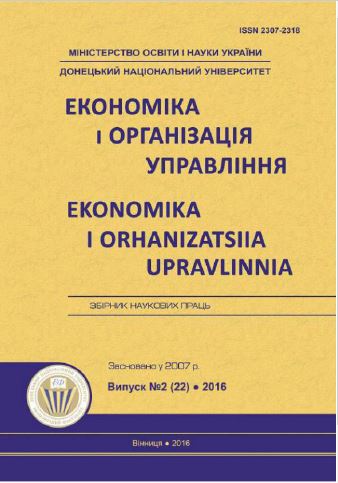The effect of exogenous variables on P/E determinants. the case of Balkan capital markets.
Keywords:
P/E ratio, fundamental analysis, relative valuation, macroeconomic factorsAbstract
The many applications of P/E ratio has increased the importance of studying the determinants of the multiplier. This paper is focused on examining the effect of exogenous factors (macroeconomic variables) on the connection between P/E and its determinants. Our results show that there are significant implications if the effect of these variables is removed. Even more, there is an evidence that exogenous factors are artificially increasing the connection between P/E and the determinants.References
Alford, A.W., 1992, The Effect of the set of Comparable Firms on the Accuracy of the Price Earnings Valuation Method, Journal of Accounting Research, v30, pp. 94-108.
Ball, C. and W. Torous, 2000, Stochastic correlation across international stock markets, Journal of Empirical Finance. V7, pp. 373-388.
Beaver, W. and D. Morse, 1978, What do P/E ratios mean?, Financial Analysts Journal, v34, pp. 65-76.
Bhojraj S., C. M. C. Lee, Oler D., 2003, What’s My Line? A Comparison of Industry Classification Schemes for Capital Market Research. Journal of Accounting Research, v41, pp. 745-774.
Bhojraj, S.and C. M. C. Lee, 2002,: Who is my peer? A valuation-based approach to the selection of comparable firms, Journal of Accounting Research, v40, pp. 407-439.
Boatman, J.R. and E.F. Baskin, 1981, Asset Valuation in Incomplete Markets, The Accounting Review, pp. 38-53.
CA Magni, Relevance or irrelevance of retention for dividend policy irrelevance, Berkeley Mathemarketics Group
Cheng, C. S. A. and R. McNamara, 2000, The valuation accuracy of the priceearnings and price-book benchmark valuation methods, Review of Quantitative Finance and Accounting, v15, pp. 349-370;
Damodaran, A, 2002, Investment Valuation, Second Edition, John Wiley and Sons, New York.
Easton, P., 2004, PE Ratios, PEG Ratios and Estimating the Implied Expected Rate of Return on Equity Capital, The Accounting Review, v79, pp. 79-95.
Edwards, E. and P. Bell, 1961, The Theory and Measurement of Business Income, University of California Press, Berkeley.
Ganchev, Al. Institutional Characteristics of Hedge Funds. // Business Management. 2015, 1, pp. 20-38.
Jolliffe I.T. Principal Component Analysis, Series: Springer Series in Statistics, 2nd ed., Springer, NY, 2002, XXIX, 487 p. 28 illus. ISBN 978-0-387-95442-4
Kostov, D. A Study on the impact of macroeconomic factors on the capital market. // Empirical Studies in Economics, Business Administration and Management. ASI Print, 2011, pp. 50-68, ISBN: 978-954-9336-60-3.
Longin, F. and B. Solnik, 2001, Extreme Correlation of International Equity Markets, Journal of Finance, v56, pp. 649-675.
Peasnell, K., 1982, Some Financial Connections between Economic Values and Accounting Numbers, Journal of Business Finance and Accounting, v9, pp. 361-381.
Razali, Nornadiah; Wah, Yap Bee, 2011, "Power comparisons of Shapiro–Wilk, Kolmogorov–Smirnov, Lilliefors and Anderson–Darling tests". Journal of Statistical Modeling and Analytics 2 (1): pp. 21–33.
Shapiro, S. S.; Wilk, M. B., 1965, An analysis of variance test for normality (complete samples). Biometrika 52 (3–4): 591–611. doi: 10.1093/biomet/52.3-4.591. JSTOR 2333709. MR 205384. pp. 591-611.
Yang, Li, Tapon, Francis and Sun, Yiguo, 2006, International correlations across stock markets andindustries: trends and patterns 1988-2002, Applied Financial Economics, 16: 16, pp. 1171-1183.
Zahariev, A. Issues of Corporate Capital Optimisation in Bulgaria. // Business Management. 2014, 2, pp. 26-47.
Zahariev, A. and others. Financial analysis. Faber, V. Tarnovo, 2016.
www.capitaliq.com – Provided access on a Project №17/2016 at the Institut for Scientific Research, "D.A.Tsenov” Academy of Economics.

